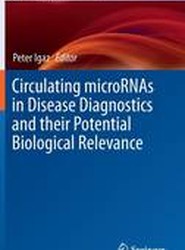(To see other currencies, click on price)
MORE ABOUT THIS BOOK
Main description:
thrombospondin-l may be encoded by a tumor suppressor gene. Dr. O'Reilly discusses angiostatin, an exciting recently discovered factor derived from the fibrinolytic proenzyme plasminogen that inhibits tumor angiogenesis, primary tumor growth, and formation of metastases. In addition to the soluble class of angiogenesis-regulatory factors discussed above, interactions of endothelial cells with components of the extracellular matrix and with other cell types are critical for proper formation of vessels. Drs. Grant and Kleinman discuss the role of laminin and other matrix molecules in regulation of capillary formation. Dr. van Hinsbergh and colleagues describe the role of fibrin and the fibrinolytic system in angiogenesis associated with wound repair. Cell surface mole- cules that interact with the extracellular matrix have been implicated in the regulation of angiogenesis. Dr. Varner discusses some exciting new studies on the roles of specific vascular cell integrins (a /33 and a /3s) in mediating v v tumor angiogenesis and angiogenesis associated with wound healing.
The pericyte, a vascular smooth muscle-like cell, exerts a powerful regulatory effect during the later stages of angiogenesis in which mature capillaries are formed. These mechanisms are discussed by Drs. Hirschi and D' Amore. With all the recent progress in the molecular biology of angiogenesis, the contribution of microenvironmental conditions such as hypoxia and pH to angiogenesis is often ignored. Drs. Rockwell and Knisely review this area of investigation and present studies of experimental tumor models.
Contents:
Angiogenesis and angiogenesis inhibition: An overview.- Significance of angiogenesis in human disease.- Role of the macrophage in angiogenesis-dependent diseases.- Angiogenesis in human gliomas: Prognostic and therapeutic implications.- Regulation of angiogenesis in malignant gliomas.- Lymphangiogenesis: Mechanisms, significance and clinical implications.- Angiogenesis as a biologic and prognostic indicator in human breast carcinoma.- Molecular mechanisms of angiogenesis regulation.- Control of angiogenesis by cytokines and growth factors.- Fibroblast growth factors as angiogenesis factors: New insights into their mechanism of action.- Regulation of angiogenesis by scatter factor.- Vascular endothelial growth factor: Basic biology and clinical implications.- Vascular permeability factor/vascular endothelial growth factor: A multifunctional angiogenic cytokine.- Angiogenesis inhibition.- Angiostatin: An endogenous inhibitor of angiogenesis and of tumor growth.- Thrombospondin as a regulator of angiogenesis.- Regulation of angiogenesis by cell-matrix cell-cell and other interactions.- Regulation of capillary formation by laminin and other components of the extracellular matrix.- Hypoxia and angiogenesis in experimental tumor models: Therapeutic implications.- The role of vascular cell integrins ?v?3 and ?v?5 in angiogenesis.- Role of fibrin and plasminogen activators in repair-associated angiogenesis: In vitro studies with human endothelial cells.- Tumor angiogenesis: Functional similarities with tumor invasion.- Control of angiogenesis by the pericyte: Molecular mechanisms and significance.
PRODUCT DETAILS
Publisher: Springer (Birkhauser Verlag AG)
Publication date: September, 2011
Pages: None
Weight: 768g
Availability: Available
Subcategories: Cardiovascular Medicine, General Issues
From the same series



































